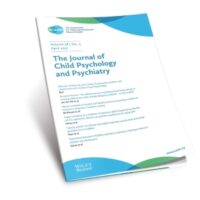sleep disorders
-

The BAby’s Sleep Questionnaire: Infant Sleep and Parental Understanding and Misperceptions
In this Papers Podcast, Professor Sooyeon (Aly) Suh discusses her co-authored JCPP paper ‘Validation of the Parental Understanding and Misperceptions about BAby’s Sleep Questionnaire using auto-videosomnography’. There is an overview of the paper, methodology, key findings, and implications for practice.
Read more -

Predicating Responses to Insomnia Prevention Programme in Subgroups of At-Risk Adolescents
In this Papers Podcast, Dr. Si-Jing Chen discusses her JCPP paper ‘Subtyping at-risk adolescents for predicting response toward insomnia prevention program’. Si-Jing is the first author of the paper. There is an overview of the paper, methodology, key findings, and implications for practice.
Read more -

Melatonin Use and the Risk of Self-Harm and Unintentional Injuries in Youths
In this Papers Podcast, Dr. Marica Leone discusses her JCPP paper ‘Melatonin use and the risk of self-harm and unintentional injuries in youths with and without psychiatric disorders’. Marica is the first author of the paper.
Read more -

Are some children genetically predisposed to poor sleep? A polygenic risk study in the general population
Open Access paper from the JCPP – ‘Children who are genetically predisposed to insomnia have more insomnia-like sleep problems, whereas those who are genetically predisposed to longer sleep have longer sleep duration, but are also more awake during the night in adolescence.’ Desana Kocevska (pic) et al.
Read more -

Subtyping at-risk adolescents for predicting response toward insomnia prevention program
Open Access JCPP paper – ‘Adolescents at risk for insomnia can be classified into different subgroups according to their psychological profiles, which were associated with differential responses to the insomnia prevention program.’ Si-Jing Chen et al.
Read more -

The interaction between polygenic risk and environmental influences: A direct test of the 3P model of insomnia in adolescents
Open Access paper from the JCPP – ‘This work sheds light on the complex relationship between genetic and environmental factors implicated for insomnia.’ Juan J. Madrid-Valero (pic) et al.
Read more -

Report from a randomized control trial: improved alignment between circadian biology and sleep–wake behavior as a mechanism of depression symptom improvement in evening-type adolescents with depressive symptoms
Open Access paper from the JCPP – ‘These results provide novel evidence for improved alignment between circadian biology and sleep–wake behavior as a specific mechanism of depression improvement, provide key clues into the complex relationship between sleep and depression, and have significant clinical implications for adolescents with depression.’ Lauren D. Asarnow (pic) et al.
Read more -

Sub-types of insomnia in adolescents: Insights from a quantitative/molecular twin study
Open Access paper from JCPP Advances – ‘Insomnia with short sleep duration has been postulated as more severe than that accompanied by normal/long sleep length. While the short duration subtype is considered to have greater genetic influence than the other subtype, no studies have addressed this question’. Juan J. Madrid-Valero (pic) et al.
Read more -

Melatonin use and the risk of self-harm and unintentional injuries in youths with and without psychiatric disorders
Open Access paper from the JCPP – ‘This study investigated whether melatonin, which is the most common medication for sleep disturbances in youth in Sweden, is associated with a decreased risk of injury. Analyses were stratified by sex, injury type, psychiatric comorbidities and age at melatonin-treatment initiation’. Marica Leone (pic) et al.
Read more -

Sleep and Daily Suicidal Ideation Among High-Risk Adolescents and Young Adults
In this podcast, we talk to Dr. Jessica Hamilton and Dr. Peter Franzen about their recent co-authored JCPP paper, ‘Sleep influences daily suicidal ideation through affective reactivity to interpersonal events among high-risk adolescents and young adults’.
Read more